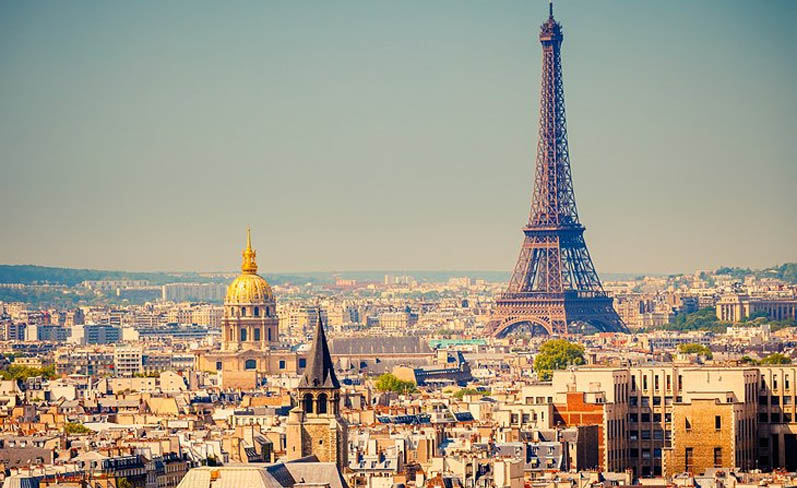France
From the heady scent of Provence’s sprawling lavender fields to the enduring glamour of the Cote D’Azur, France is a diverse and colourful country with something to occupy even the most travel weary of visitors. Lose yourself in culture, shopping, gastronomy, monuments of a bygone age and the glorious towns, villages and cities steeped in history.
Highlights
There’s nowhere quite like the lifestyle in Cannes or St Tropez in summer, while the charming villages of Provence, France’s national parks and intriguing cities such as Nantes give many reasons to explore.
The Alps
The destination of choice for 120 million visitors every year, the Alps are a picture-perfect playground for those who crave outdoor pursuits, pure mountain air and stunning scenery. Chambery is a pretty alpine town and Annecy, in the Haute-Savoie, is best known for its medieval old town, chateaux, vibrant cafe culture and stunning lake. The enduring ski resorts of Val d’Isere, Courchevel, Morzine, Tignes, Meribel and Chamonix are amongst the best in Europe and perfect if you want to hit the slopes. Grenoble, known as the capital of the Alps, offers culture, fine food, great hotels and a lively nightlife.
West
The wild, Atlantic west coast of France offers up the rambling, diverse wine regions of Bordeaux, beautiful fishing town of Arcachon, Biarritz with its faded Belle Epoque glamour or long expanses of sandy beaches. Convivial La Rochelle is a great place to visit; from here head off to the idyllic islands of Re, Noirmoutier, Oleron and Ile d’Aix to sample a pace and quality of life you’ll unlikely find anywhere else in the country along with some simply stunning Breton cuisine. The Dune du Pilat should also be high on your list – at 500m wide, 3km long and 107m high, it’s Europe’s largest sand dune.
Central France
This is home to one of the most famous wine producing regions in the world and literally hundreds of extravagant, intricately constructed chateaux dotted along France’s longest and grandest river, the Loire. The whole of the Loire Valley has been designated a Unesco World Heritage Site and it’s easy to see why. Kings and queens were once drawn to the rich, green landscapes in the region and competed for supremacy with these unbelievable palaces. If you’d rather head to the cities, Orleans offers visitors an ornate, beguiling cathedral, Angers promises a mix of culture and nightlife and Poitiers is an inviting, friendly city with some stunning architecture.
Attractions
Pyrenees
Less developed and less visited than the Alps, the Pyrenees are a fantastic stop-off for nature lovers, adventurers and those wanting to escape the more hectic towns and cities down south. Pilgrims flock en masse to the small market town of Lourdes, drinking or bathing in the waters of the Grotto of Massabielle. The Virgin Mary is said to have appeared to a local woman here in 1858 and since then, the town has earned itself a reputation for its healing powers. Bayonne is a small, manageable city close to the Atlantic coast, while Pau has a lively weekend market and is a pleasant place to spend a couple of days.
St. Tropez
Centre of the Cote d’Azur and with a buzzing, grown up atmosphere, quaint old town, lively weekend markets and picture-perfect port filled with fine shops, restaurants and huge boats, St Tropez epitomizes French glamour. Picasso and his fellow artists once frequented this part of the world, drawn by the light. Actress Brigitte Bardot was also a fan and it is that glamour that still endures to this day. Visit Club 55 at Pampelonne beach or simply sit and people-watch while sipping a coffee at one of the many exclusive port-side cafes
Pont du Garde
This perfectly preserved ancient Roman aqueduct will take your breath away. Built in the 1st century AD, this 50km long, three-tiered aqueduct crosses the Gardon river and was built to supply the city of Nimes with water. The Unesco World Heritage Site should be on any travel itinerary to the region.
Eiffel Tower
The world’s most famous tower was originally intended to be built in Barcelona, but the plans were rejected. Spain’s loss was France’s gain, with Gustave Eiffel building it for the 1889 Exposition Universelle. It was only intended to last for 20 years, but these days, more than seven million people still visit the tower every year to take an exhilarating ride 986ft up to the top to experience unrivalled views of Paris.
